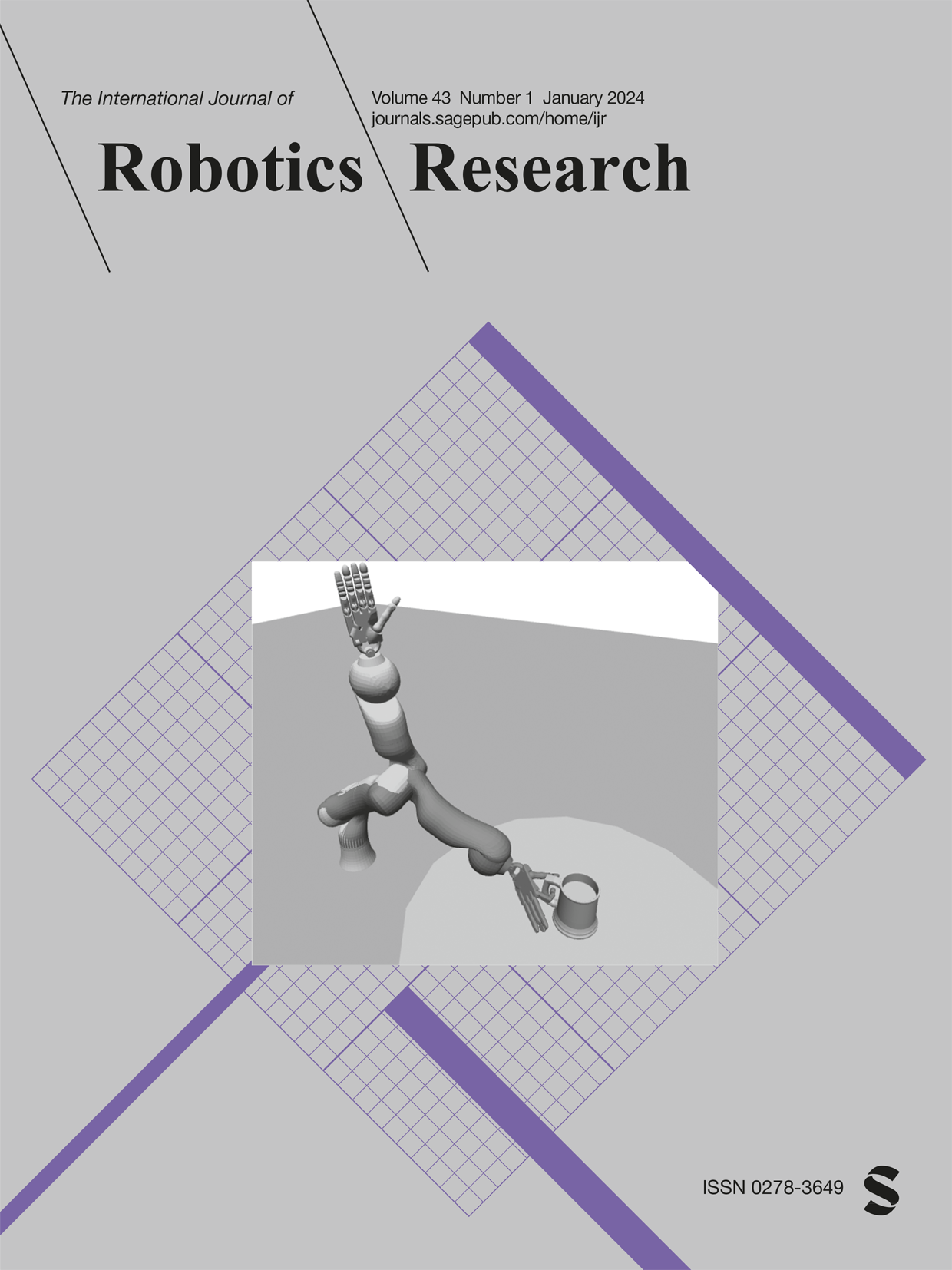在激光雷达SLAM中利用地面分割进行闭环闭合的鲁棒全球配准
IF 5
1区 计算机科学
Q1 ROBOTICS
引用次数: 0
摘要
全局配准是估计三维点云两个视点之间的相对姿态的一项基本任务。然而,影响激光雷达SLAM全局配准性能的主要有两个问题:稀疏性问题和简并性问题。稀疏性问题是由机械旋转激光雷达传感器三维点云测量的稀疏特性引起的。有时会出现退化问题,因为异常值拒绝方法拒绝了太多的对应,留下少于三个内线。随着三维点云两个视点的位姿差异越来越大,这两个问题变得越来越严重。为了解决这些问题,我们提出了一个强大的全球注册框架,称为quatro++。我们扩展了之前只关注全局配准本身的工作,在LiDAR SLAM中解决了闭环关闭方面的鲁棒全局配准问题。为此,利用地面分割实现鲁棒的全局配准。实验结果表明,该方法克服了稀疏性和简并性问题,比现有的全局配准方法具有更高的成功率。此外,我们还表明,地面分割技术对于提高地面车辆的识别成功率有显著的帮助。最后,将本文提出的方法应用于LiDAR SLAM中的环路约束模块,验证了环路约束的质量得到了提高,映射结果更加精确。因此,实验证据证实了我们的方法作为闭环初始对准的适用性。我们的代码可在https://quatro-plusplus.github.io上获得。本文章由计算机程序翻译,如有差异,请以英文原文为准。
Quatro++: Robust global registration exploiting ground segmentation for loop closing in LiDAR SLAM
Global registration is a fundamental task that estimates the relative pose between two viewpoints of 3D point clouds. However, there are two issues that degrade the performance of global registration in LiDAR SLAM: one is the sparsity issue and the other is degeneracy. The sparsity issue is caused by the sparse characteristics of the 3D point cloud measurements in a mechanically spinning LiDAR sensor. The degeneracy issue sometimes occurs because the outlier-rejection methods reject too many correspondences, leaving less than three inliers. These two issues have become more severe as the pose discrepancy between the two viewpoints of 3D point clouds becomes greater. To tackle these problems, we propose a robust global registration framework, called Quatro++. Extending our previous work that solely focused on the global registration itself, we address the robust global registration in terms of the loop closing in LiDAR SLAM. To this end, ground segmentation is exploited to achieve robust global registration. Through the experiments, we demonstrate that our proposed method shows a higher succeiasdsss rate than the state-of-the-art global registration methods, overcoming the sparsity and degeneracy issues. In addition, we show that ground segmentation asdasd asignificantly helps to idfdfsncrease the success rate for the ground vehicles. Finally, we apply our proposed method to the loop clossdasdlksajing modulasdse in LiDAR SLAM and confirm that the quality of the loop constraints is improved, showing more precise mapping results. Therefore, the experimental evidence corroborated the suitabilitiasdasdy of our method as an initial alignment in the loop closing. Our code is available at https://quatro-plusplus.github.io .
求助全文
通过发布文献求助,成功后即可免费获取论文全文。
去求助
来源期刊
CiteScore
22.20
自引率
0.00%
发文量
34
审稿时长
6-12 weeks
期刊介绍:
The International Journal of Robotics Research (IJRR) has been a leading peer-reviewed publication in the field for over two decades. It holds the distinction of being the first scholarly journal dedicated to robotics research.
IJRR presents cutting-edge and thought-provoking original research papers, articles, and reviews that delve into groundbreaking trends, technical advancements, and theoretical developments in robotics. Renowned scholars and practitioners contribute to its content, offering their expertise and insights. This journal covers a wide range of topics, going beyond narrow technical advancements to encompass various aspects of robotics.
The primary aim of IJRR is to publish work that has lasting value for the scientific and technological advancement of the field. Only original, robust, and practical research that can serve as a foundation for further progress is considered for publication. The focus is on producing content that will remain valuable and relevant over time.
In summary, IJRR stands as a prestigious publication that drives innovation and knowledge in robotics research.

 求助内容:
求助内容: 应助结果提醒方式:
应助结果提醒方式:


